Introduction
Discover the vibrant flavors of Thailand with our authentic Pad Thai recipe, a beloved dish that epitomizes the art of stir-frying. This classic street food combines the perfect balance of sweet, sour, and savory elements, making it a staple in Thai cuisine. Its unique flavor profile and satisfying textures have won hearts worldwide, transforming it into a favorite for Thai food enthusiasts and casual diners alike. Whether you’re a seasoned cook or a beginner in the kitchen, this comprehensive guide will walk you through each step of creating a delicious Pad Thai that is sure to impress your family and friends. From selecting the right ingredients to mastering the stir-frying technique, we will provide you with everything you need to know for a perfect dish.
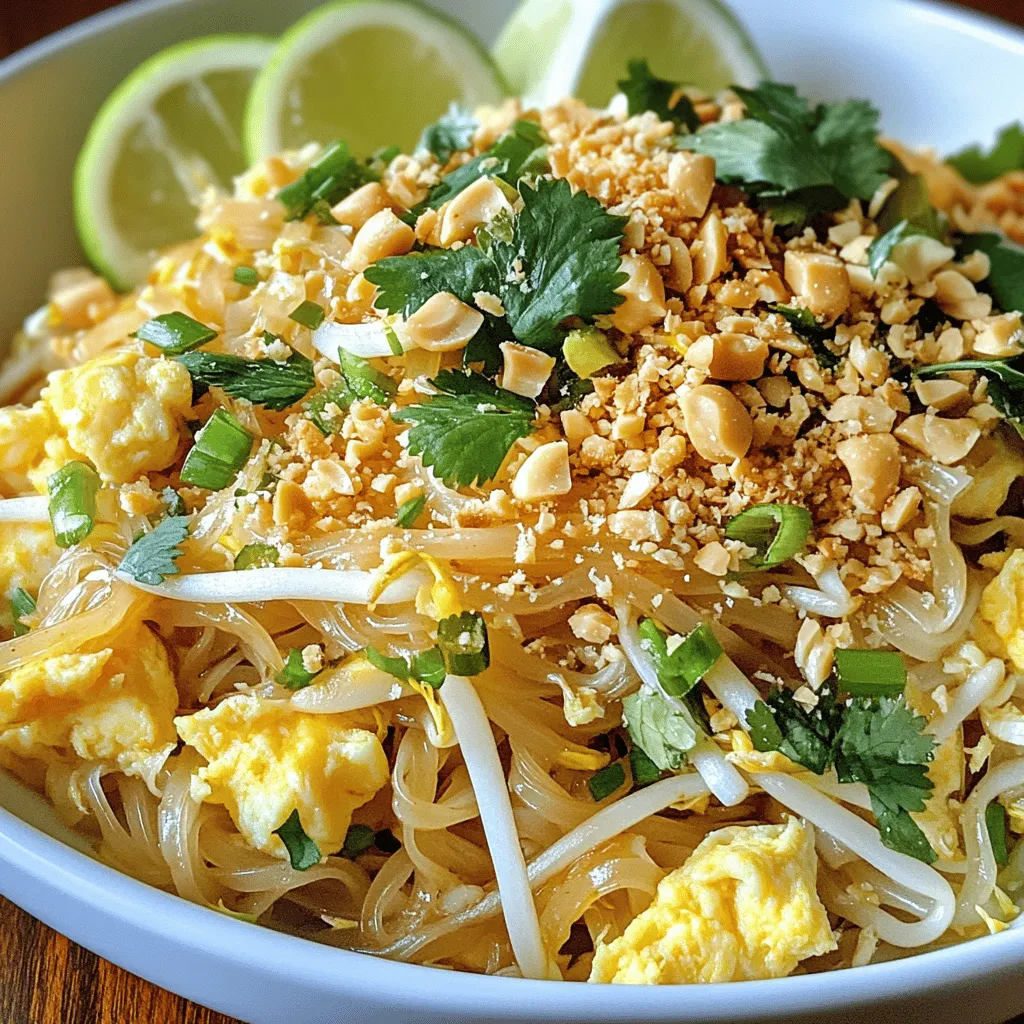
Understanding Pad Thai
Exploring the Origins of Pad Thai
Pad Thai is more than just a dish; it is a culinary representation of Thailand’s rich history and culture. The origins of Pad Thai can be traced back to the 1930s when the Thai government sought to promote a national identity amidst a wave of modernization. At that time, the dish was introduced as a means of encouraging rice noodle consumption, which was a staple food in Thailand. The combination of rice noodles, eggs, and tamarind sauce was not only delicious but also economical and easy to prepare.
Culturally, Pad Thai has become synonymous with Thai street food. Vendors set up their stalls in bustling markets, delighting passersby with the aromatic scents of stir-fried noodles and the sizzle of ingredients on a hot wok. Each vendor often adds their personal touch, giving rise to numerous regional variations. In essence, Pad Thai showcases the creativity and adaptability of Thai cuisine, making it a dish that can be found in homes and restaurants alike.
The Essential Ingredients of Pad Thai
To truly appreciate the art of Pad Thai, it’s essential to understand the ingredients that make this dish shine. The key components include:
- Flat Rice Noodles: These are the foundation of Pad Thai. Their chewy texture is crucial to the overall experience of the dish. When cooked correctly, they absorb the flavors of the sauce beautifully.
- Protein Choices: Traditional Pad Thai often features protein options like tofu, chicken, or shrimp. Each protein brings its unique flavor and texture, allowing for endless customization based on personal preferences.
- Fresh Vegetables: Bean sprouts, scallions, and sometimes carrots add freshness and a satisfying crunch. These vegetables not only enhance the flavor but also contribute to the dish’s nutritional profile.
- Garnishes: The finish of Pad Thai is often a medley of fresh herbs, chopped peanuts, and lime wedges. These elements provide additional layers of flavor and texture, elevating the dish to new heights.
Ingredients Breakdown
The Staple Components
Flat Rice Noodles: The type of noodles used in Pad Thai is crucial to achieving the right consistency. Typically, thin flat rice noodles are preferred. They should be soaked in warm water for around 30 minutes before cooking to soften without turning mushy. This step is vital; over-soaking can lead to a clumpy mess, while under-soaking can result in tough noodles that don’t absorb the sauce as intended.
Tamarind Paste: This tangy ingredient is essential for creating the signature flavor of Pad Thai. Derived from the tamarind fruit, it contributes a unique sweet-sour taste that defines the dish. When selecting tamarind paste, look for a product with a rich, dark color, as this indicates a more concentrated flavor.
Fish Sauce: A critical component that adds depth to the dish, fish sauce provides a savory, umami kick. For those adhering to a vegetarian or vegan diet, there are excellent alternatives available, such as soy sauce or tamari, which can mimic the salty aspect without the fishy notes.
The Supporting Ingredients
Garlic: This aromatic ingredient is a staple in many cuisines, and for good reason. In Pad Thai, garlic adds a robust flavor that complements the other ingredients. When sautéed, it releases essential oils that enhance the overall aroma of the dish.
Eggs: Eggs play a dual role in Pad Thai: they contribute to the dish’s richness and help bind the noodles and other ingredients together. When cooked correctly, they create a silky texture that elevates the entire experience.
Fresh Herbs and Nuts: Garnishes like cilantro and crushed peanuts are not just for aesthetics; they contribute essential flavors and textures. Cilantro adds a fresh, peppery note, while peanuts provide a satisfying crunch that contrasts beautifully with the soft noodles.
The Pad Thai Sauce
Crafting the Perfect Sauce
The key to a memorable Pad Thai lies in the sauce. To create a balanced Pad Thai sauce, you’ll need the following:
1. Tamarind Paste: Start with a base of tamarind paste, combining it with sugar to enhance the sweetness.
2. Fish Sauce: Add fish sauce to introduce saltiness and depth.
3. Chili Powder: For those who enjoy a bit of heat, chili powder or fresh chilies can be added to taste.
Balancing Flavors
Achieving the right balance of flavors is crucial in making an exceptional Pad Thai sauce. The combination of sweet, salty, and spicy elements should work harmoniously. If you prefer a sweeter sauce, increase the sugar slightly; for more heat, add more chili powder. Taste-testing is essential during this process, as everyone’s palate differs.
Tips for Adjusting Spice Levels
If you’re cooking for a crowd with varying spice tolerances, consider serving the chili powder on the side. This way, each person can customize the heat level according to their preference. Additionally, garnishing with lime wedges allows diners to brighten the dish with a squeeze of citrus, further enhancing the overall flavor profile.
Step-by-Step Cooking Instructions
Preparing the Noodles
Now that we’ve covered the background, essential ingredients, and sauce for our Pad Thai, it’s time to get started on the cooking process. Here’s how to prepare the noodles for your dish:
1. Soak the Noodles: Begin by soaking your flat rice noodles in warm water for about 30 minutes. This will soften them without cooking them through.
2. Drain the Noodles: Once softened, drain the noodles and set them aside. Ensure they are not too wet, as excess water can dilute your sauce later on.
3. Prep Your Ingredients: While the noodles are soaking, prepare your protein and vegetables. Chop your chosen protein into bite-sized pieces and rinse your bean sprouts and scallions. Having everything ready before you start cooking will make the process much smoother.
With the noodles prepped and ingredients ready, you’re well on your way to creating a delicious, authentic Pad Thai that will transport you straight to the vibrant streets of Thailand. In the next sections, we will explore the cooking techniques to bring all these elements together into a delicious stir-fried symphony.
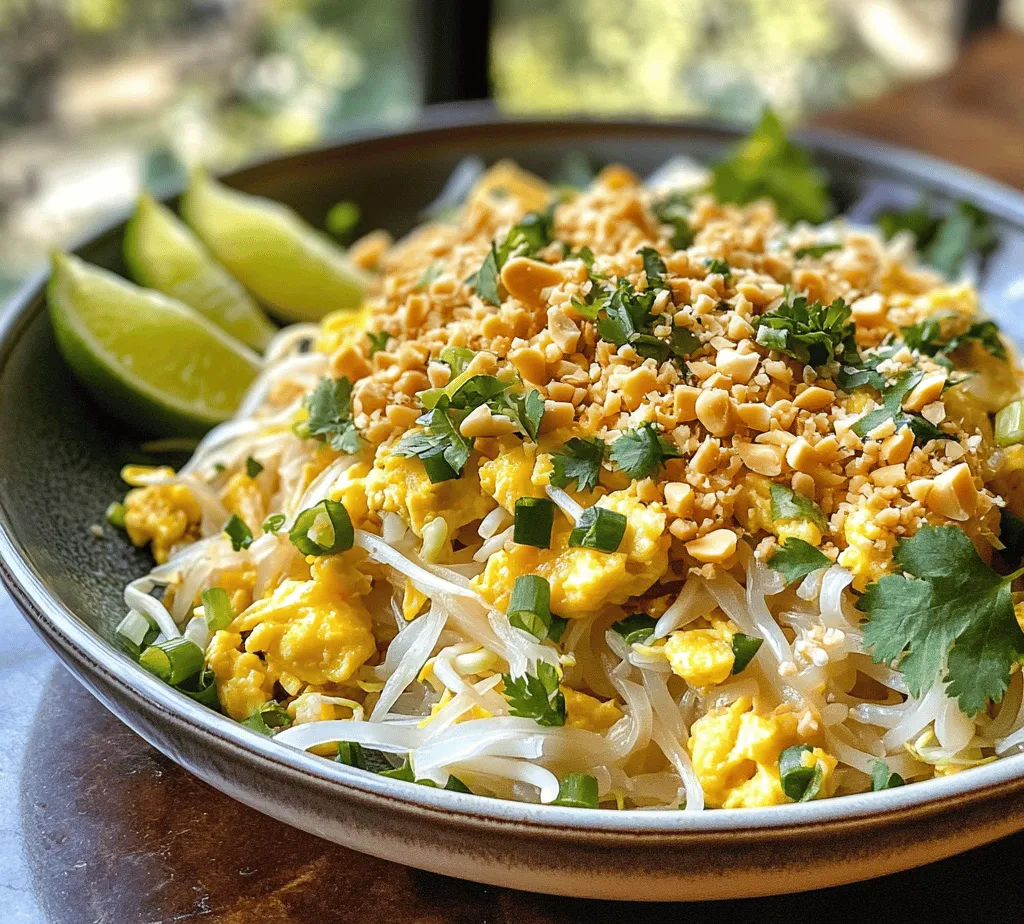
Importance of Soaking Noodles for the Right Texture
To achieve the perfect Pad Thai, the initial step of soaking the rice noodles is crucial. Soaking the noodles allows them to soften without becoming mushy, which is vital for the dish’s overall texture. Ideally, dry rice noodles should be soaked in warm water for about 30 to 40 minutes until they are pliable but still have some firmness. This step ensures that when stir-fried, the noodles maintain their shape and absorb the flavors from the sauce effectively.
If you are short on time, you can soak the noodles in hot water for around 10 to 15 minutes. However, be careful not to over-soak them, as this can lead to a clumpy and sticky texture when cooked. Remember, the goal is to achieve a tender yet slightly chewy noodle that holds up well against the other ingredients in your Pad Thai.
Tips for Avoiding Clumping During Cooking
During the stir-frying process, clumping can be a common issue. Here are some tips to prevent this:
1. Use Enough Oil: Ensure you have enough oil in your skillet or wok. This not only helps in preventing the noodles from sticking together but also contributes to a beautifully fried texture.
2. Stir Frequently: Constant movement is key. Use a spatula to toss the noodles and ingredients regularly, allowing them to cook evenly and preventing any sticking.
3. Don’t Overcrowd the Pan: If you are making a large batch, it is better to work in smaller portions. Cooking too many ingredients at once can lower the pan’s temperature, resulting in uneven cooking and, ultimately, clumping.
4. Add Noodles Last: As a rule of thumb, add the soaked noodles towards the end of your stir-frying process. This helps them to absorb the flavors of the sauce without overcooking.
Making the Sauce
Detailed Instructions on Mixing the Sauce Ingredients
The sauce is the heart of your Pad Thai, offering a balance of sweet, sour, and salty flavors. To create the sauce, follow these steps:
1. Combine Ingredients: In a bowl, combine 3 tablespoons of fish sauce, 1 tablespoon of tamarind paste, 2 tablespoons of sugar (preferably palm sugar), and 1 tablespoon of lime juice.
2. Mix Until Smooth: Stir the mixture with a whisk or fork until the sugar dissolves completely. The tamarind paste should be well blended with the other ingredients to ensure a consistent flavor.
3. Adjust to Taste: Taste the sauce and adjust the flavors as needed. If you prefer a sweeter sauce, add more sugar. For extra tang, increase the lime juice. Keep in mind that the sauce will further develop as it cooks with the other ingredients.
How to Troubleshoot Sauce Consistency Issues
If you find that your sauce is too thick, you can add a tablespoon of water to thin it out. Conversely, if it is too thin, allow it to simmer in the pan for a few more minutes until it reduces to your desired consistency. A well-balanced sauce should coat the noodles without being overly runny or sticky.
Stir-Frying Techniques
Selecting the Right Skillet or Wok for Stir-Frying
Choosing the right cookware is essential for achieving that authentic Pad Thai texture. A well-seasoned cast iron skillet or a non-stick wok is ideal, as they conduct heat evenly and allow for high-temperature cooking. The high sides of a wok also make it easier to toss the ingredients without spilling.
Heating Oil: The Science Behind Achieving the Perfect Sizzle
Before adding any ingredients, it is crucial to heat your oil adequately. Heat your chosen oil (a combination of vegetable oil and a hint of sesame oil works wonderfully) in the skillet or wok over medium-high heat. You’ll know the oil is ready when it starts to shimmer and you can see small ripples on the surface. This is the perfect time to start adding your ingredients, ensuring a satisfying sizzle that locks in flavors.
Proper Order of Ingredient Addition for Optimal Flavor Development
The order in which you add your ingredients can significantly impact the final flavor of your Pad Thai. Start by adding aromatics such as minced garlic and shallots, allowing them to fry briefly until fragrant. Then, introduce your protein choice—be it tofu, chicken, or shrimp—cooking it until it’s nearly done. Finally, add your vegetables and noodles, followed by the sauce, ensuring that each element has been cooked through and flavored properly before the next is added.
Cooking the Protein
Tips for Achieving the Perfect Texture for Tofu, Chicken, or Shrimp
- Tofu: Use firm tofu for the best texture. Press it to remove excess moisture, then cut it into bite-sized pieces. Pan-fry until golden brown on all sides for a crispy exterior.
- Chicken: Thinly slice boneless chicken breast against the grain for tenderness. Marinate briefly in a bit of soy sauce before adding it to the pan to enhance flavor and juiciness.
- Shrimp: Choose large, fresh shrimp, peeled and deveined. Cook them quickly in the hot oil until they turn pink and opaque. Be cautious not to overcook, as shrimp can become rubbery.
How to Ensure Even Cooking Without Overcrowding the Pan
To achieve an evenly cooked protein, ensure that it is spread out in the pan without overlapping. If necessary, cook in batches. This will help maintain the pan’s temperature and allow for proper browning, which enhances flavor.
Incorporating Vegetables and Noodles
Techniques for Gently Folding Ingredients Without Breaking Noodles
When combining your vegetables and noodles, use a gentle folding motion with your spatula. Start from the bottom of the pan and lift the noodles up and over the vegetables, being careful not to break them. This technique helps to maintain the integrity of the noodles while ensuring an even distribution of flavors.
Ensuring Even Distribution of Sauce Throughout the Dish
Once everything is combined, make sure to pour the sauce evenly over the mixture. Continue to stir and fold until every noodle is coated with sauce. If you notice areas that seem dry, add a splash of water or more sauce to ensure consistent flavor throughout the dish.
Serving Suggestions
Plating Your Pad Thai
Creating an impressive presentation can elevate your Pad Thai from ordinary to extraordinary. Consider using a large, shallow plate to showcase the colorful ingredients. Twirl the noodles into a nest-like shape in the center of the plate and artfully arrange your protein and vegetables around it.
Traditional Garnishes and Their Significance
Garnishing your Pad Thai can add a burst of color and flavor. Traditional garnishes include crushed peanuts for crunch, fresh cilantro for an aromatic touch, and lime wedges to enhance the dish’s brightness. Bean sprouts add a refreshing crunch, while a sprinkle of chili flakes can provide a welcome kick of heat.
Pairing Options
Suggested Beverages That Complement Pad Thai
To complement the rich flavors of Pad Thai, consider serving it with a light beverage. A crisp Thai iced tea or a refreshing coconut water can balance the dish’s spice. If you prefer alcohol, a light lager or a fruity white wine like Riesling pairs beautifully.
Side Dishes That Enhance the Dining Experience
Pad Thai is often served with a side of fresh spring rolls or a simple cucumber salad. These options provide a crisp contrast to the warm, savory noodles and help cleanse the palate between bites.
Nutritional Information
Understanding the Nutritional Profile
Pad Thai can be a nutritious meal when made with fresh ingredients. A typical serving contains approximately 400-600 calories, depending on the protein choice and portion size. The dish is rich in carbohydrates from the rice noodles, protein from the chosen meat or tofu, and healthy fats from the oil and peanuts.
Health Benefits of Key Ingredients in Pad Thai
- Rice Noodles: A gluten-free option that provides energy.
- Tamarind Paste: Rich in antioxidants and beneficial for digestion.
- Peanuts: Full of healthy fats and protein, contributing to heart health.
- Vegetables: Offer essential vitamins and minerals, enhancing the dish’s nutritional value.
Conclusion
Making authentic Pad Thai at home is not only achievable but also a rewarding culinary experience. By following this detailed guide, you can create a delicious meal that captures the essence of Thai street food. Enjoy the process, experiment with flavors, and savor the delightful results of your homemade Pad Thai. Embrace the rich cultural heritage of this dish and share your creation with family and friends, bringing a taste of Thailand to your kitchen.
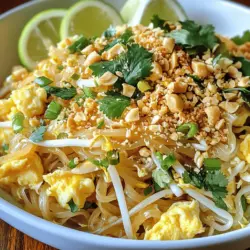

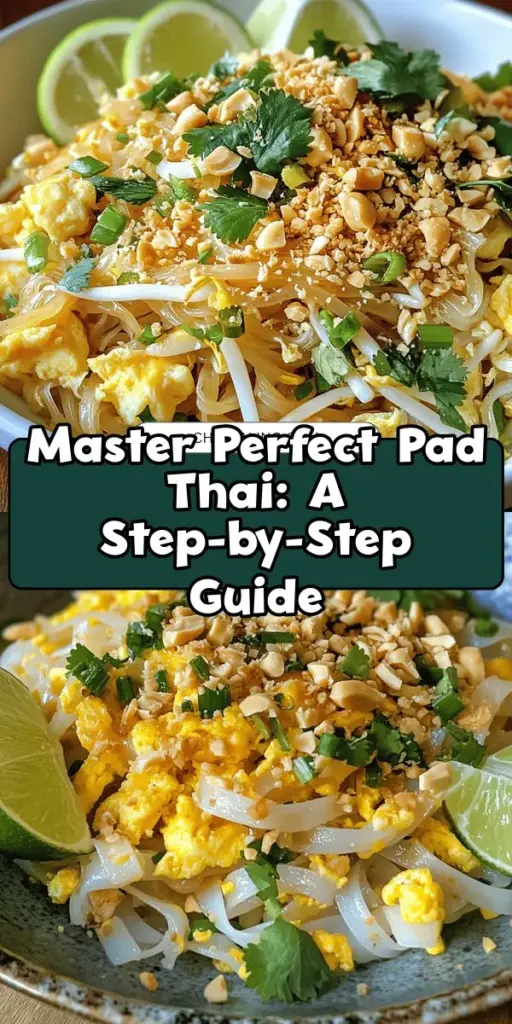

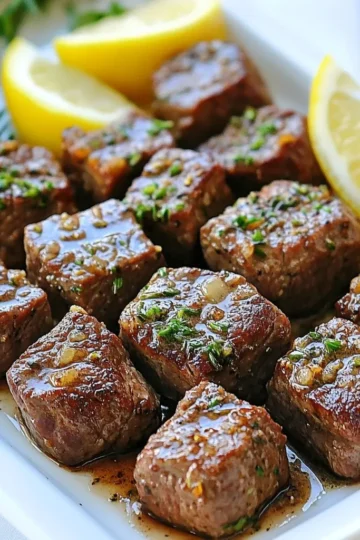
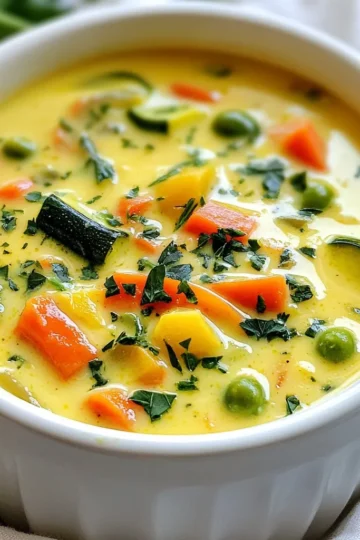
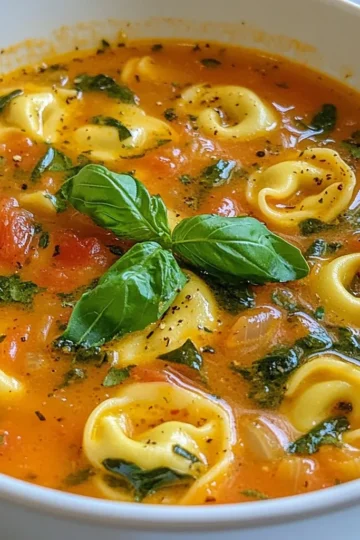
Leave a Reply